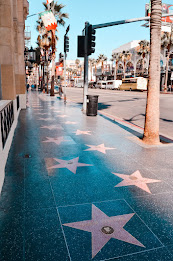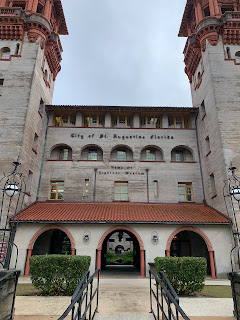March 31, 2022
St. Augustine, FL
Castillo de San Marcos National Monument has protected the city of St. Augustine for hundreds of years. The fort began construction in October of 1672 by Governor Manuel Cendoya. Previously, the fortifications that stood in the place of Castillo de San Marcos were built with wood. These wooden structures could not withstand the attacks or Florida's weather hurdles. According to the National Parks Service website, known as America's oldest masonry fortress, the Castillo is the only military construction from the 17th century still standing in the United States. The fort was named a national monument in 1924 and then put under the National Park Service's care a few years later in 1933. This creation is an engineering marvel and is visited by thousands of tourists each year.
Website Link: https://www.nps.gov/casa/index.htm
Artifact 1
The Castillo de San Marcos National Monument is a fortress made out of a stone called coquina. This type of stone is made up of compressed seashells. Coquina is formed over thousands of years by an acidic substance acting as a glue for the small shells to solidify and become limestone. The term coquina is a Spanish word that means tiny shell. Coquina used to build the fort was found in what is today Anastasia State Park. After the Spanish realized how resilient the coquina stone was, a wall was built around the city with coquina to protect the people of St. Augustine.
Artifact 2
When the Castillo de San Marcos National Monument was built, the surrounding moat was not meant to hold any water. This area was for the cattle, animals, and a protective barrier for when the fort was under attack. In 1936, the moat surrounding the fort was filled with water by the National Park Service to serve as more of an attraction. A few years later, the National Park Service realized filling the moat with water was damaging the monument. The foundation was found badly damaged and repairs were made after the water was drained.
Exterior 1
Exterior 2
In Conversation Image 1
Coming from Oklahoma and having a military background, I was reminded of Fort Sill, Oklahoma which became the new home for the Apache Tribe Indians. During the relocation of the Native Americans, the American government relocated the Apache Tribe from Florida to Fort Sill, Oklahoma. Following the frontier era, the Fort Sill was considered to be handed back to the Apache Tribe. However, the fort was instead expanded to house the School of Fire in 1911, an Infantry School in 1913, and the Army Air Services Post Field in 1917. More than 50,000 soldiers trained here during World War II. Today, what was the School of Fire is the Field Artillery School. Officers and enlisted personnel receive both basic and advanced training here.
Photo Link: https://www.texomashomepage.com/news/local-news/first-confirmed-covid-19-case-at-fort-sill/
In Conversation Image 2
Fort Matanzas is a monument not far from the Castillo de San Marcos National Monument. This fortification is located off the Matanzas River and is also taken care of by the National Park Service. I thought of this fort because it was created with a similar style to the Castillo de San Marcos and acted as an aid to the Castillo. Fort Matanzas was built by the Spanish to protect the back entrance to the city of St. Augustine in 1742. The location was intentional because the Castillo de San Marcos fort could not protect the city from the rear. By building protection at the entrance to the Matanzas Inlet, Spanish soldiers could still guard St. Augustine from attacks. Later, Fort Matanzas became a National Monument on October 15, 1924.
Photo Link: https://gregdisch.com/2020/10/22/fort-matanzas-national-monument/
In Conversation Literature
Parable of the Sower Graphic Novel
Damian Duffy
"For survival, position, power.
They remember old hates and generate new ones,
They create chaos and nurture it.
They kill and kill and kill.
Until they are exhausted and destroyed,
Until they are conquered by outside forces..."
When reading the Parable of the Sower, this quote reminded me of the Castillo de San Marcos Fort and how much conflict the fortification has been through. Humans can act in evil ways to get what they want. When the fort endured wars and attacks, there was chaos, fighting, and death. Just like the excerpt from Parable of the Sower, soldiers would kill until they conquered and attained what they set out to get. To survive, and obtain position and power, wars would break out causing only negative impacts. Many conflicts took place throughout the Castillo de San Marcos Fort's history, but we learn today from those actions.



























